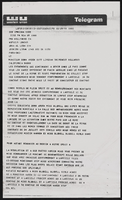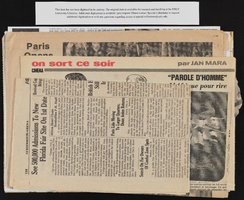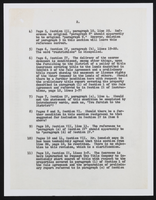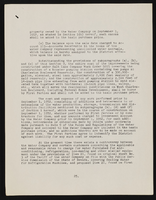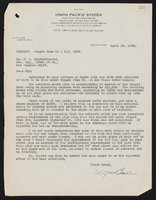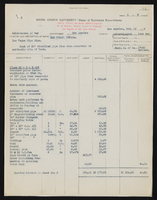Search the Special Collections and Archives Portal
Search Results
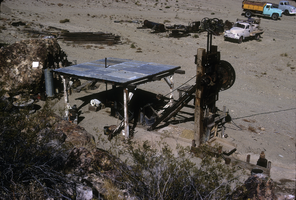
Slide of the old stamp mill, circa 1950s
Date
1950 to 1959
Archival Collection
Description
The old stamp mill, location unknown. A stamp mill (or stamp battery or stamping mill) is a type of mill machine that crushes material by pounding rather than grinding, either for further processing or for extraction of metallic ores. Breaking material down is a type of unit operation. A stamp mill consists of a set of heavy steel (iron-shod wood in some cases) stamps, loosely held vertically in a frame, in which the stamps can slide up and down. They are lifted by cams on a horizontal rotating shaft. On modern mills, the cam is arranged to lift the stamp from the side, so that it causes the stamp to rotate. This evens the wear on the shoe at the foot of the stamp. As the cam moves from under the stamp, the stamp falls onto the ore below, crushing the rock, and the lifting process is repeated at the next pass of the cam. Each one frame and stamp set is sometimes called a "battery" or, confusingly, a "stamp" and mills are sometimes categorized by how many stamps they have, i.e. a "10 stamp mill" has 10 sets. They usually are arranged linearly, but when a mill is enlarged, a new line of them may be constructed rather than extending the line. Abandoned mill sites (as documented by industrial archaeologists) will usually have linear rows of foundation sets as their most prominent visible feature as the overall apparatus can exceed 20 feet in height, requiring large foundations. Stamps are usually arranged in sets of five. Some ore processing applications used large quantities of water so some stamp mills are located near natural or artificial bodies of water. For example, the Redridge Steel Dam was built to supply stamp mills with process water.
Image

Telegram from N. A. Williams (Los Angeles) to Walter R. Bracken (Las Vegas), June 5, 1924
Date
1924-06-11
Archival Collection
Description
The water shortage was causing concern for the railroad because low water levels caused the well to spew sand which was very bad for the trains. A new well was needed to increase supply of water.
Text

Letter from F. H. Knickerbocker (Los Angeles) to F. E. Pettit, Jr., August 16, 1924
Date
1924-10-30
Archival Collection
Description
Discussion of what measures should be taken to control the flow from the new artesian well near the Las Vegas Springs.
Text

Letter from Walter R. Bracken (Las Vegas) to H. H. Larson (Los Angeles), May 22, 1940
Date
1940-05-22
Archival Collection
Description
Discussion of the necessity of keeping down weeds around the reservoirs and settling ponds at Las Vegas Springs to avoid fires.
Text
Pagination
Refine my results
Content Type
Creator or Contributor
Subject
Archival Collection
Digital Project
Resource Type
Year
Material Type
Place
Language
Records Classification

